Categories: Electric motors and their application
Number of views: 12298
Comments on the article: 0
How to choose capacitors for connecting a single-phase and three-phase electric motor to a 220 V network
It often happens, especially in everyday life, that an asynchronous electric motor must be connected to a standard single-phase AC network with an operating voltage of 220 volts. And the engine is three-phase! This task is typical when we need to install an emery or a drilling machine, for example, in a garage.
To arrange everything correctly, they use the so-called starting and working (phase-shifting) capacitors. In general, capacitors are of different types, different capacities, and before proceeding with the construction of the circuit, it is necessary to choose capacitors of the appropriate type, rated voltage and correctly calculate their required capacitance.
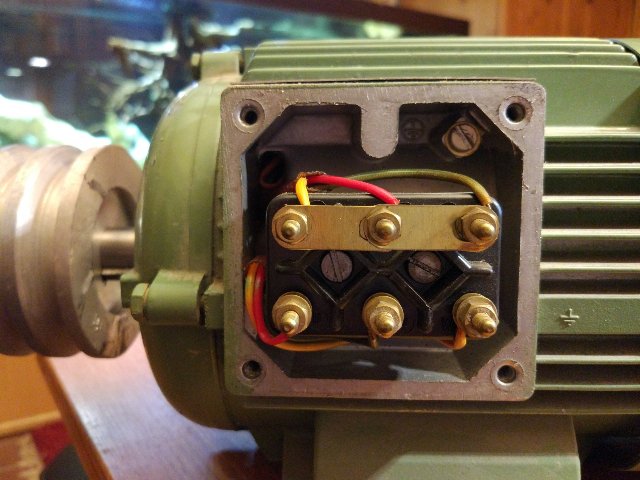
Everyone knows that an electric capacitor is two conductive plates separated by a dielectric, and serves to accumulate, temporarily store and transfer electric charge, that is, electric energy.
There are two types of capacitors, polar and non-polar. Non-polar can be used in AC circuits, polar - no. If the polar capacitor is included in the AC circuit, then very soon a short circuit will occur in the dielectric layer, and the capacitor will fail. Nonpolar react equally equally effectively to voltage of any polarity applied to its plates, and also to alternating voltage.
So, choosing a working capacitor for a three-phase motor, it is necessary to take into account several basic parameters of the working AC circuit. The formula below for calculating the capacitance of a working capacitor in microfarads, with a current frequency of 50 Hz in the network, looks like this:
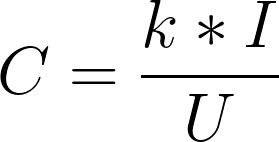
Here, depending on the connection scheme of the stator windings of the motor (“star” or “triangle”), the coefficient at the beginning of the formula will take the value 4800 for the “triangle” or 2800 for the “star”. I is the nominal value of the effective current of the stator of the connected motor.
The rated current I is indicated on the nameplate (information plate) on the motor housing, or, if the plate is overwritten, it is measured by current clamps in one of the phases during normal three-phase power supply of the motor. U is the effective (rms) AC voltage of the network to which the motor with a capacitor will be connected, for example 220 volts.
There is also a simpler approach to choosing the capacitance of the working capacitor - for every 100 watts of motor power in the star connection, 7 microfarads of capacitor capacitance are taken. If the connection is a triangle, then the capacity per 100 watts will be 12 microfarads.
When choosing a capacitor capacitance, it is very important not to exceed the calculated one, otherwise the current through the stator winding will exceed the rating, the motor will overheat and can burn out quickly in general.
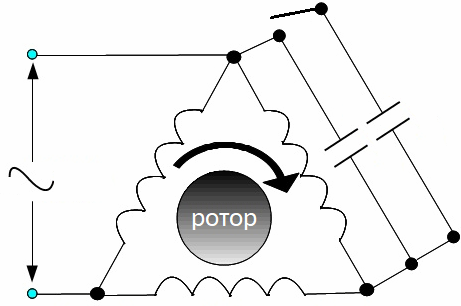
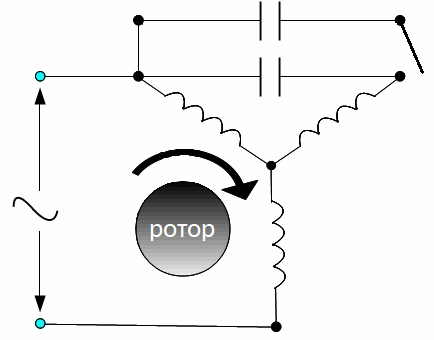
When the engine is started under load, and this often happens, since the emery wheel or drilling equipment have a significant mass, the starting current must be greater than the rated current.
To do this, an additional starting capacitor is connected in parallel to the working capacitor for the duration of the start. This capacitor is needed only for a few seconds, until the engine reaches its rated speed. After that, the starting capacitor is switched off and only the working phase-shifting capacitor remains in the circuit.
The capacitance of the starting capacitor is selected 2.5-3 times greater than the capacity of the working capacitor. And the rated voltage of this capacitor should be as much as possible at least 1.5 times more than the mains supply voltage.Sometimes even series-connected capacitors are used to obtain the required starting capacitance and voltage margin.
If the motor is not three-phase, but single-phase, then it may have a starting winding, which serves to create torque in seconds of starting. There must also be a phase-shifting capacitor. But single-phase motors can work in various modes.
If the starting capacitor and the starting winding are powered only during startup, then take 70 microfarads per 1 kilowatt of engine power. If the working capacitor along with the additional winding is fed all the time, then take about 30 microfarads per kilowatt.
If the starting capacitor is connected at the start time, and the working capacitor continues to be connected during operation of the equipment, then, as a rule, the value of the total capacitance of the starting and working capacitor is selected from the ratio of 1 microfarad per 100 watts of power.
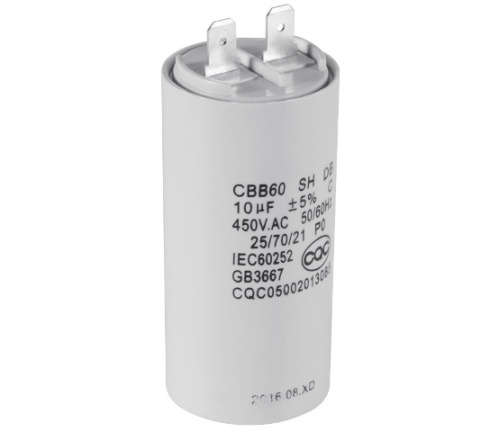
The information in this article will help you calculate the capacitance of the working and starting capacitors. It is convenient to adapt the starting capacitor so that it is connected and disconnected by a specially launched button without fixing. However, if after accurate calculations and connecting the capacitor the engine starts to warm up significantly during operation, the capacity of the working capacitor should be reduced.
As for the rated voltage of the capacitor, usually capacitors for an operating voltage of less than 450 volts are not used. It is best if the capacitor is rated at 500 or 600 volts for alternating current.
As starting and working phase-shifting capacitors, polypropylene dielectric capacitors are remarkably suitable, which are marketed as “starting capacitors” in the market. If capacitors of this type are not available, then “paper” type MBGO are suitable, if only the maximum voltage matches.
See also at i.electricianexp.com
:
